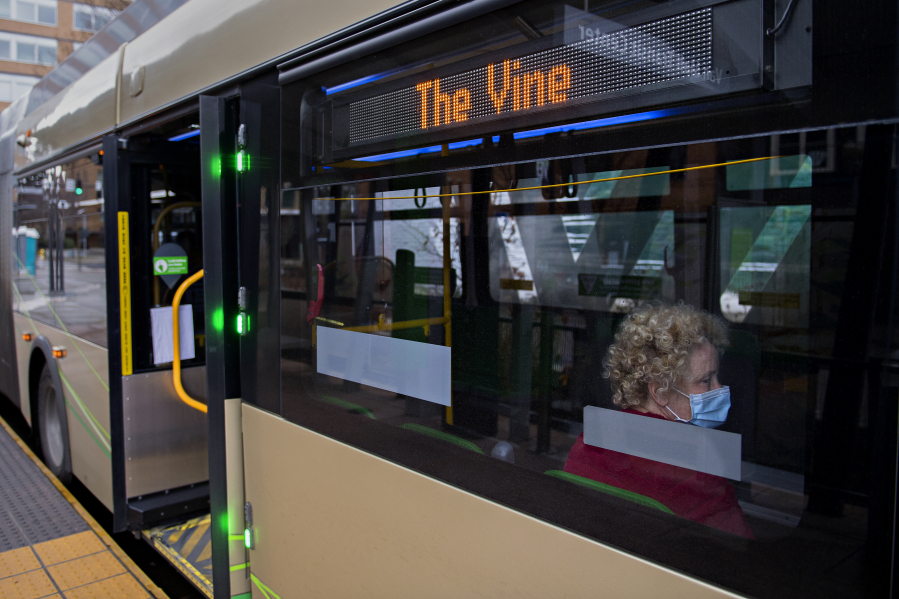As Vancouver’s population grows, C-Tran strives to build mass transit system
These two emergencies, Donaghy mentioned, converse for a broader fact: The individuals who use C-Tran actually, really want it.
Constructing a helpful public transportation system is tough. The service must be sturdy sufficient to be sensible. Taking a sluggish, sporadic, or unreliable route isn’t a viable choice for most individuals. However transit additionally wants sufficient drivers – and drivers who’re completely reliant on the system – to justify the large public funding.
“The chicken-and-egg is extra about the way you construct site visitors: how do you present frequency of service and system connectivity?” Mentioned Rebecca Kennedy, Vancouver’s long-term planning supervisor.
Density is an element. Though Vancouver’s inhabitants is rising quickly, its neighborhoods aren’t almost as dense as in main cities with public transportation.
One other necessary side is “driver shaft turbines,” mentioned Kennedy. Vancouver has a lot of them: procuring malls, hospitals, campuses, and work facilities like Columbia Tech Middle. The important thing to a profitable transit is to start out on corridors that have already got the very best passenger numbers after which make these routes extra snug, extra frequent, and extra user-friendly as a viable journey choice.
“It is not essentially the density of improvement. It is the site visitors turbines and the way many individuals use public transport to search out seats, ”mentioned Kennedy. “It is positively an incremental factor.”
Along with the common bus routes, C-Tran has The Vine, its specific bus line. Began in 2017, the variety of drivers had risen steadily till the onset of the coronavirus.
Inspired by rising demand, C-Tran turned its eyes to a different BRT route: a line at present below improvement alongside Mill Plain Boulevard, which is predicted to enter operation in 2023. The Mill Plain line will price an estimated $ 50 million to construct. Round half of that price will likely be lined by a federal transit administration grant. A 3rd line is envisaged alongside Freeway 99.
These routes had been rated as excessive precedence as a result of they at present meet the factors of the “driver inhabitants generator”, but in addition as a result of they intersect with future city improvement.
For instance, the Mill Plain BRT line will run by the Heights District, the positioning of a significant redevelopment plan led by the Vancouver Metropolis Council. This plan depends upon a flood of recent condominium buildings – and to attain this density, the district should present transportation for folks with no automobile.
“Parking is one thing that you just need to fastidiously calibrate. It is costly to construct. If you happen to use an excessive amount of of it, you are actually driving up improvement prices, ”mentioned Kennedy. “Native transport is a bit of the puzzle in the case of managing the demand for parking areas in the long run.”
‘Proper dimensioning’
In response to Colombian protection of the evolving BRT routes, some readers posted feedback and emails criticizing C-Tran and the Metropolis of Vancouver for pumping assets into native public transport fairly than infrastructure for personal autos to construct.
There’s a stability, however public transportation and highway capability aren’t mutually unique, Kennedy mentioned.
“Particular person automobile possession and driving alone is not going to disappear. We see this as an necessary choice. However we additionally need folks to have completely different choices, ”mentioned Kennedy. “Roads are very costly to construct, and in a developed metropolis, it’s actually costly to enlarge them.”
Enhancing native transportation additionally brings an apparent environmental profit – a research commissioned by town in 2019 discovered {that a} quarter of Vancouver’s CO2 emissions come from gasoline-powered highway transport. C-Tran is accountable for only one p.c of town’s carbon footprint.
In accordance with Scott Patterson, C-Tran’s venture supervisor for the Mill Plain line, BRT is without doubt one of the extra inexpensive and environment friendly public transportation programs. A lot of the 37 station areas that can ultimately dot the Mill Plain Line are already publicly owned.
“One of many issues C-Tran thought-about after we began planning the Fourth Plain venture early was the usage of current public proper of means,” Patterson mentioned. “What we wished to do was the most affordable, however had comparable advantages.”
BRT is the automobile of selection for the growth of native transport in Vancouver, additionally as a result of it’s a smaller metropolis. Chris Selk, C-Tran’s public affairs supervisor, mentioned the pliability and relative affordability of including designated bus routes make it simpler than constructing a subway or mild rail system.
“In massive cities with a excessive inhabitants density, the BRT system is extra of a hard and fast route (much like the sunshine rail, however with no observe). Some of these BRT programs sometimes price greater than BRT BRTs with no mounted observe, ”wrote Selk in an e-mail.
“One of many nice issues about BRT programs throughout the nation (and even internationally) is the flexibility to dimension the BRT to greatest match the group it serves.”
[ad_2]

